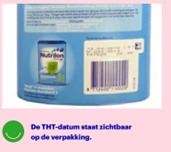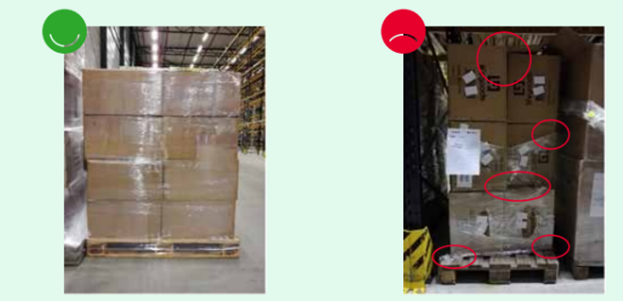1. Barcode articles
If two Items are not completely identical (for example, different size, dimension or color), the Items should have different barcodes.
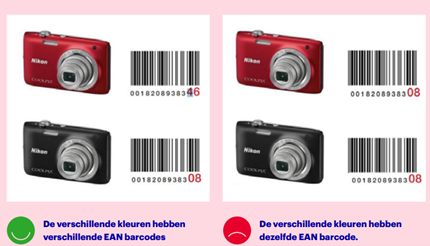
There should be a maximum of one visible barcode on each individual Item. All other barcodes (except serial number barcodes) must be completely covered with a blank sticker. Covering the barcode with a marker is insufficient.
For humans, the barcode must be readable. That is, the numeric value of the barcode should be printed below the barcode
2. Boxes
If Items are delivered in a Box, no EAN barcodes may be visible on the Box. Only the individual Sales Units in the Box have an EAN barcode. This is to avoid the Box being seen as a Sales Unit and the wrong barcode being scanned during the receiving process. Therefore, remove all EAN barcodes on the Box or cover them with opaque tape or a blank sticker. Covering the barcode with a marker is insufficient
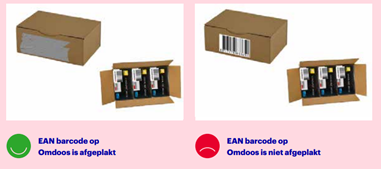
3. Multipacks
When a Sales Unit consists of several identical Items, these Items must be packaged together so that they cannot become loose and be sold as single items. There must be a visible EAN on the Box or outer packaging that does not match the EAN of the single Item. There must also be a sticker on the package that clearly states that it is a set. This can be done by using one of the following texts “Do not separate”, “Do not unpack” or “Sold as single unit”. This makes it clear in the Fulfilment Center that it is a set and the Item will not be unpacked further.
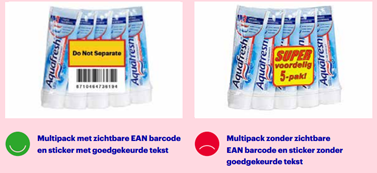
4. Fragile items
Breakable Items (such as crockery, glassware, lighting, decorations, etc.) and fragile Items (such as liquids think detergent, soap, etc.) should be packed in such a way as to minimize the chance of damage.
Fragile Items:
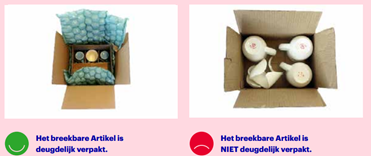
5. Different sizes of items
When delivering an Article in different sizes, the Articles should be packed together by size as much as possible
6. Clothing, fabric and textiles
Clothing, fabric and textiles can be damaged by dust or moisture. These Items must be packaged in such a way that they are not damaged during the handling process. Make sure the Articles are in a sealed polybag or box.
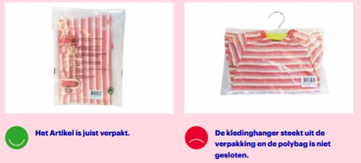
The following should be taken into account:
- The barcode must be on the polybag or box so that the barcode can be scanned without having to open the protective packaging
- Besides the polybag or box, the Article must have a Hangtag with the same barcode on it as on the polybag or box.
- The Article must not contain a clothes hanger.
- The Article must not contain any parts that stick out of the polybag, therefore the hangtag must not stick out of the polybag.
- There must be no price on the Article, polybag or hangtag.
- When delivering an Article in different sizes, the Articles must be packed together by size as much as possible.
- Shoes must be delivered in their original packaging.
7. Sharp objects
- All sharp edges and pointed ends must be covered and must not protrude.
- The Article must be packaged in such a way that it can be processed safely.
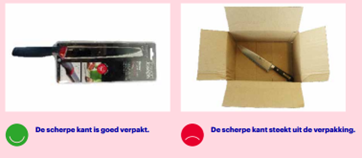
8. Hazardous substances
If the supplier delivers Articles to bol which must be stored by bol or a third party designated by bol by means of additional facilities required on the basis of laws and regulations, the supplier must inform bol of this in advance and provide the necessary forms.
Bol only accepts Articles containing hazardous materials as listed in ADR hazard classes 2.1, 2.2, 3 and 4.1.
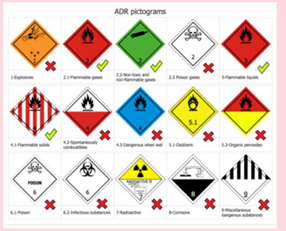
9. Perishable items
Each Perishable Item must have an expiration date on the outside of the protective packaging.
Items must have a shelf life of more than 270 days at the time of receipt by bol. Items with a shelf life of less than 100 days will be destroyed by bol. Unless otherwise agreed in writing with bol.
